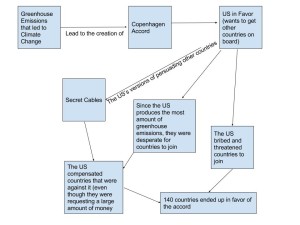- There are many threats to biodiversity as learned within this module. What are some of them? What is the acronym to remember the threats? Briefly describe each one and answer the questions above with 200-300 words:
As stated in the question, there are many threats to biodiversity today. The largest and most common threats are represented by the acronym, HIPPO. HIPPO stands for Habitat Loss, Invasive Species, Pollution, Human Population, and Overharvesting. The first threat within the acronym is habitat loss. Habitat loss happens when an area in the environment is converted from usable to unusable. As stated within the module, the causes of habitat loss are industrial activities, agriculture, aquaculture, mining, deforestation, and water extraction. Invasive Species are the next concern. When a new animal, plant, or microbe enter a new area, it can affect others within its habitat. If the new species brings in an unfamiliar disease, competition for food, or just disrupt the other species it could potentially kill others. Pollution is next. Chemicals that are immersed into the atmosphere are very deadly for species within the area. The discharge of toxic synthetic chemicals and heavy metals are harmful and lead to extinctions as well. Up next is the human population. Human Population also has an impact. The higher the human population gets, the less resources there are for other species. The last one is overharvesting. Overharvesting includes things like hunting, fishing and gathering. When people over-fish, they could potentially be putting a type of fish at risk of extinction.
2. In the next paragraph, identify something that could be done to prevent biodiversity loss in a specific area. Include a course concept from a previous module and link it to this module’s concept. (200-300 words)
The area I am choosing to talk about is Australia. I would have used my hometown but that would have been a little difficult. The environmental changes in Australia have been going on for thousands of years. Indigenous people have been interacting within Australia’s environment for tens of thousands of years. This has been very harmful to the course of evolution. The concept that I plan to bring into this discussion is the concept of sustainability. If the interaction of indigenous people with the country was harming evolution of some species, then the sustainability of those species was slowly diminishing before they went extinct or left the area. There has also been a large loss of habitat which directly relates to the the HIPPO concept of biodiversity. 75% of rainforests have been lost. Along with the rainforests, 50% of all forests have been lost. Coastal wetlands, temperate woodlands, and several grasslands have all been lost as well. Among these habitats that are being lost, there are several animals and plants that are under major threat. There are extinct, extinct in the wild, critically endangered, endangered, vulnerable, and conservation dependent species within the country of Australia. To prevent some of these things from happening, we can limit the amount of expansion of the human population and let some of the habitats thrive. By grouping the human population together, it will leave for more areas of vegetation and animals to live.
Reference: australianmuseum

